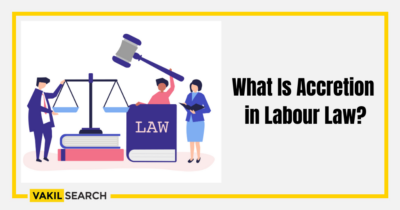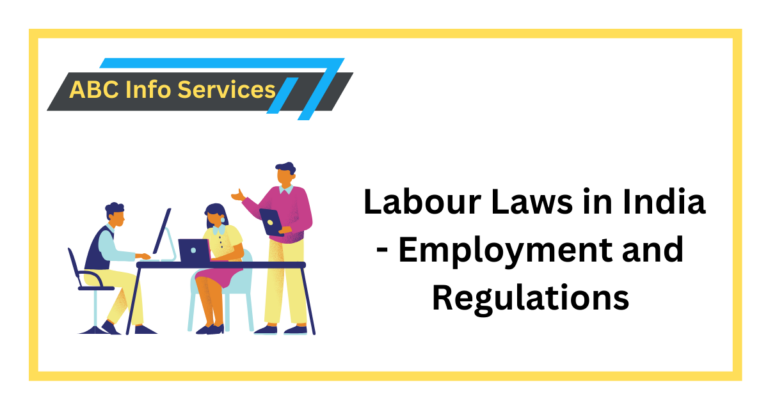The article explains the legal arbitration concept to the readers in a simpler model. Read on to know more about the subject.
Arbitration in labour laws is one of the solutions to resolve conflicts between employees and employers. The employers and employees both signed a collective agreement before the industry started operating.
This contract carries all the information regarding the rights, duties, and responsibilities of both the employers and employees. Once this agreement is done, both parties must follow them mandatorily.
But in reality, disputes can arise at any point in the life term of a contract. Sometimes this dispute cannot be handled by the management or the labour union representatives. To get it resolved, they need assistance from the State Board or Mediation or an Arbitration.
How is Arbitration Handled from a Legal Perspective?
To handle the grievances, the arbitrator must often interpret the labour contract. This type of grievance sometimes includes one-sided changes in the contract interpretation, which can affect all the employees. So, the arbitrator needs to interpret the terms of the agreement so that it can not affect the larger population of employees.
Arbitration in labour disputes is also termed industrial arbitration. This is a typical arbitration process used to settle labour disputes that may arise between the labour union, union member or union representative and the firm’s owner out of the court to avoid legal complications.
In our country, the Arbitration and Conciliation Act of 1996 does not mention which types of labour disputes can be settled by arbitration and which are not. The arbitration process in labour disputes has changed the relationship between the employees and the employer and these changed relationships have been recogniSed by the labour law.
Characteristics of an Arbitrator
An arbitrator has to be neutral and experienced enough in hearing procedures and getting a resolution to the dispute. The arbitrator is given the right to decide that both parties must obey. These arbitrators are mostly retired government officials or labour law professors.
Three Kinds of Arbitrations
- Interest arbitrations: Such arbitrations decide the final terms of the collective agreement
- Advisory arbitrations: Here, the arbitrators make a decision which does not have any legal or binding force. It usually happens when a dispute occurs in a small firm)
- Grievance arbitrations: This is the most popular among all of the arbitrations. Here the arbitrator acts as an administrative judge who is empowered to initiate action against the party responsible for the dispute
The arbitration process starts once a grievance arises and the management fails to negotiate internally. The arbitrators get a copy of the agreement and a detailed report of the grievance filed. After a thorough review, the arbitrators issue a hearing date for both parties. Both parties must provide and submit their evidence and legal research on the hearing day.
The decision taken by the arbitrators is considered to be the final verdict. However, in recent days some of the decisions face questions against the arbitrators’ decision.
Various Terminologies Used in Labour Law
Adjudication: Process of settling disputes by a third party.
Agreement: A employment contract between the firm owner and the labour union which covers the wages, rights of workers and unions, procedure of settling disputes,
Arbitration: A process of settling a dispute with the help of a third party whose decision is final and obeyed by all. This third party can be a single person or a board headed by a chairman and one or more representatives from the labour union.
Bargaining agent: The union appointed by the Labour Relations Board or similar government agency as the exclusive representative of all employees in a company which takes an active and major part in collective bargaining.
Base rate: The lowest rate of wages on an hourly basis for the lowest skilled labour is termed the base rate.
Benefits: The non-wage facilities provided to the labour like paid vacation, life and medical insurance, pensions etc. come under benefits.
Collective bargaining: Process of fixing wages, the hourly rate of payment, hours to work and conditions of work through direct negotiation between the union representative and the management.
Conciliation and mediation: A process used to resolve labour disputes by voluntary agreement. This is used to settle grievances within the company just to avoid any kind of legal litigations.
Contracting out: It is the process by which the employers hire a worker from outside the labour union to do a job usually done by the regular employees.
Cost of living allowance: It is a periodic increment based on changes in the consumer price index.
Dues: Yearly payment by the union members to financially support the smooth operations of their union.
Grievance: A written complaint against the management by one or more employees or by their union against a breach of the collective agreement is called a grievance. The process of handling and settling grievances is normally get mentioned in the collective agreement.
Homeworking: The work has been done from home or instead of any factory or office.
International labour organisation: Tripartite world body representative of labour, management and government and is an agency of the United Nations.
Privatisation: This is the process of transferring public ownership to some private entity. It includes the ownership of resources and services.
Shift: A working time slot given to the labour helps to continue the production process throughout the day. It generally consists of 8 hours a day.
Strike: A collective refusal to work continue as a protest against any breach of contract has been done by the management. It is organised by labour union representatives and the local trade union.
Trade union: It is a worker’s association developed based on mutual interests regarding wages, hours, working conditions, benefits etc.
Working conditions: It consists of workers’ job environment, safety, working hours, free clothing or uniforms etc. many of these conditions are a part of the collective agreement and can be influenced by collective bargaining.
Some Case Studies Related to the Indian Judiciary System
Some of the most relevant legal cases that could be referred to in terms of legal connotation can be listed below
- A.K Gopalan vs. State of Madras, 1950
- Kesavananda Bharati Sripadagalavaru vs. The State of Kerala,1973
- Maneka Gandhi vs Union of India in 1977
- Shayara Bano vs Union of India & Others in 2017
Conclusion
Labour law is understood as a set of legal connotations used to explain specific terminologies concerning the legal context. We at Vakilsearch work relentlessly to give the audience a clear idea of legal connotations in the Indian context. Please consult our website to understand legal connotations from the Indian perspective clearly.
Read more,










